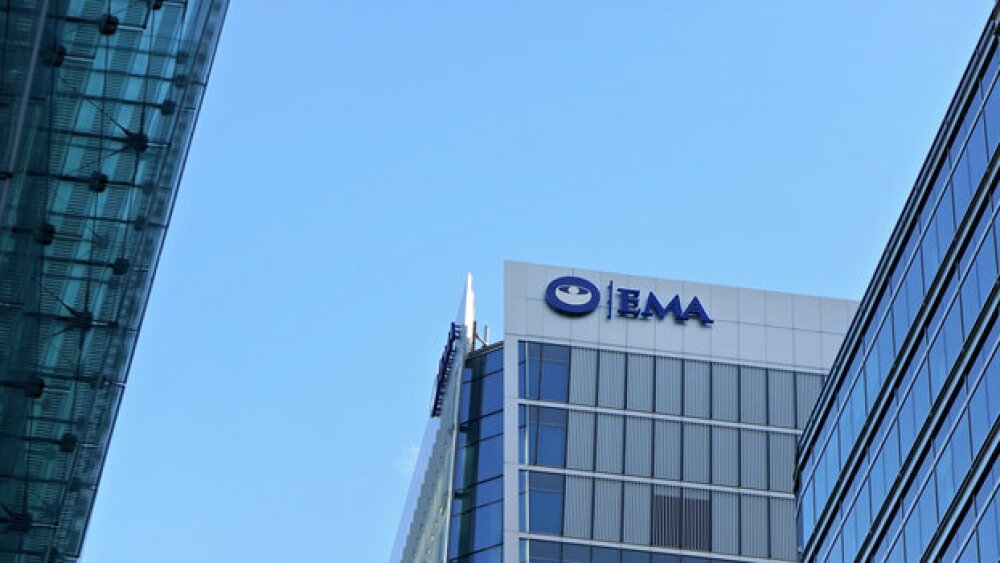Calliditas Therapeutics AB (Nasdaq: CALT) (Nasdaq Stockholm: CALTX) (“Calliditas”), today announced upcoming data presentations, as well as a sponsored symposium at the International Society of Nephrology’s World Congress of Nephrology.
| STOCKHOLM, April 8, 2024 /PRNewswire/ -- Calliditas Therapeutics (Formerly known as Pharmalink) (Nasdaq: CALT) (Nasdaq Stockholm: CALTX) (“Calliditas”), today announced upcoming data presentations, as well as a sponsored symposium at the International Society of Nephrology’s World Congress of Nephrology. The ISN World Congress of Nephrology will be held in Buenos Aires, Argentina April 13-16, 2024. Investigators will deliver additional analyses from the 2-year Phase 3 NeflgArd trial with Nefecon (TARPEYO® (budesonide) delayed release capsules/Kinpeygo®) in patients with IgA nephropathy (IgAN). Presentations will highlight the eGFR results found in patients on Nefecon as well as the data on quality of life during the trial. There will also be a presentation on the subanalysis evaluating benefits of Nefecon for patients with lower levels of UPCR. The congress will include a symposium, Evolving Landscape of eFGR and Proteinuria Surrogate Markers in IgA Nephropathy, moderated by KOL Richard Lafayette, M.D., F.A.C.P. The discussion will cover surrogate endpoints for IgA nephropathy clinical trials. The presentation details are below. Following the meeting, they will be available on the Presentations and Publications page on Calliditas’ corporate website. Presentation Details: Title: Nefecon treatment provides kidney benefits for patients with IgAN that extend to those with low levels of UPCR: A sub-analysis of the phase III NefIgArd trial Poster Number: SUN-034 Date and Time: Sunday, April 14, 5:45 - 6:45 p.m. ART Location: Exhibition Hall and Main Foyer Title: eGFR decline in patients with IgAN treated with Nefecon or placebo: Results from the 2-year NefIgArd Phase 3 trial Poster Number: SUN-050 Date and Time: Sunday, April 14, 5:45 - 6:45 p.m. ART Location: Exhibition Hall and Main Foyer Title: Nefecon effect on quality of life in patients with IgAN: SF-36 results from the Phase 3 NefIgArd trial Poster Number: SUN-036 Date and Time: Sunday, April 14, 5:45 - 6:45 p.m. ART Location: Exhibition Hall and Main Foyer Title: Nefecon treatment response in Asian and White patient populations with immunoglobulin A nephropathy: A 2-year analysis of the Phase 3 NefIgArd trial Poster Number: SUN-037 Date and Time: Sunday, April 14, 5:45 - 6:45 p.m. ART Location: Exhibition Hall and Main Foyer Symposium Details: Title: Evolving Landscape of eGFR and Proteinuria Surrogate Markers in IgA Nephropathy Date: Monday, April 15, 2024 Time: 1:45 - 2:45 p.m. ART Moderator: Richard Lafayette, MD, FACP Panel: Laura Mariani, MD MSCE Heather Reich, MD CM, PhD, FRCPC For more information, visit the ISN WCN ’24 website here. Indication TARPEYO is indicated to reduce the loss of kidney function in adults with primary immunoglobulin A nephropathy (IgAN) who are at risk for disease progression. Important Safety Information Contraindications: TARPEYO is contraindicated in patients with hypersensitivity to budesonide or any of the ingredients of TARPEYO. Serious hypersensitivity reactions, including anaphylaxis, have occurred with other budesonide formulations. Warnings and Precautions Hypercorticism and adrenal axis suppression: When corticosteroids are used chronically, systemic effects such as hypercorticism and adrenal suppression may occur. Corticosteroids can reduce the response of the hypothalamus-pituitary-adrenal (HPA) axis to stress. In situations where patients are subject to surgery or other stress situations, supplementation with a systemic corticosteroid is recommended. When discontinuing therapy or switching between corticosteroids, monitor for signs of adrenal axis suppression. Patients with moderate to severe hepatic impairment (Child-Pugh Class B and C respectively) could be at an increased risk of hypercorticism and adrenal axis suppression due to an increased systemic exposure to oral budesonide. Avoid use in patients with severe hepatic impairment (Child-Pugh Class C). Monitor for increased signs and/or symptoms of hypercorticism in patients with moderate hepatic impairment (Child-Pugh Class B). Risks of immunosuppression: Patients who are on drugs that suppress the immune system are more susceptible to infection than healthy individuals. Chickenpox and measles, for example, can have a more serious or even fatal course in susceptible patients or patients on immunosuppressive doses of corticosteroids. Avoid corticosteroid therapy in patients with active or quiescent tuberculosis infection; untreated fungal, bacterial, systemic viral, or parasitic infections, or ocular herpes simplex. Avoid exposure to active, easily transmitted infections (e.g., chicken pox, measles). Corticosteroid therapy may decrease the immune response to some vaccines. Other corticosteroid effects: TARPEYO is a systemically available corticosteroid and is expected to cause related adverse reactions. Monitor patients with hypertension, prediabetes, diabetes mellitus, osteoporosis, peptic ulcer, glaucoma or cataracts, or with a family history of diabetes or glaucoma, or with any other condition where corticosteroids may have unwanted effects. Adverse reactions: In clinical studies, the most common adverse reactions with TARPEYO (occurring in ≥5% of TARPEYO treated patients, and ≥2% higher than placebo) were peripheral edema (17%), hypertension (12%), muscle spasms (12%), acne (11%), headache (10%), upper respiratory tract infection (8%), face edema (8%), weight increased (7%), dyspepsia (7%), dermatitis (6%), arthralgia (6%), and white blood cell count increased (6%). Drug interactions: Budesonide is a substrate for CYP3A4. Avoid use with potent CYP3A4 inhibitors, such as ketoconazole, itraconazole, ritonavir, indinavir, saquinavir, erythromycin, and cyclosporine. Avoid ingestion of grapefruit juice with TARPEYO. Intake of grapefruit juice, which inhibits CYP3A4 activity, can increase the systemic exposure to budesonide. Use in specific populations Pregnancy: The available data from published case series, epidemiological studies, and reviews with oral budesonide use in pregnant women have not identified a drug-associated risk of major birth defects, miscarriage, or other adverse maternal or fetal outcomes. There are risks to the mother and fetus associated with IgAN. Infants exposed to in-utero corticosteroids, including budesonide, are at risk for hypoadrenalism. Please see Full Prescribing Information. About TARPEYO TARPEYO is an oral 4mg delayed release formulation of budesonide, designed to remain intact until it reaches the ileum. Each capsule contains coated beads of budesonide that target mucosal B-cells present in the ileum, including the Peyer’s patches, which are responsible for the production of galactose-deficient IgA1 antibodies (Gd-Ag1) causing IgA nephropathy. About the NeflgArd Study NefIgArd was a global, Phase 3, randomized, double-blind, placebo-controlled, multicenter study to evaluate the efficacy and safety of TARPEYO 16 mg once daily vs placebo in adult patients with primary IgAN (N=364) as an addition to optimized RASi therapy. Patients were randomized 1:1 to receive 16 mg/day oral capsules of TARPEYO or matching placebo for 9 months, followed by a 15-month observational follow-up period without the study drug. The primary efficacy endpoint was time-weighted average of eGFR over 2 years. The time-weighted average of eGFR over 2 years showed a statistically significant treatment benefit with TARPEYO versus placebo (difference 5•05 mL/min per 1•73 m² [95% CI 3•24 to 7•38], p<0•0001). The favorable effect of TARPEYO on eGFR was seen by Month 3 (the earliest assessment) and did not appear to increase in magnitude over two years. At the end of Year 2, there was a 5.9 mL/min/1.73 m2 difference in the mean change from baseline in eGFR between TARPEYO and placebo (95% CI: 3.3 to 8.5 mL/min/1.73 m2; p<0.0001). The effect on kidney function seen during the 9-month treatment period persisted following completion of treatment through the end of the study but the overall effect on the long-term rate of decline has not been established. The most common adverse reactions with TARPEYO (occurring in ≥5% of TARPEYO treated patients and ≥2% higher than placebo) were peripheral edema (17%), hypertension (12%), muscle spasms (12%), acne (11%), headache (10%), upper respiratory tract infection (8%), face edema (8%), weight increase (7%), dyspepsia (7%), dermatitis (6%), arthralgia (6%), and white blood cell count increase (6%). About Primary Immunoglobulin A Nephropathy Primary immunoglobulin A nephropathy (IgA nephropathy or IgAN or Berger’s Disease) is a rare, progressive, chronic autoimmune disease that attacks the kidneys and occurs when galactose deficient IgA1 is recognized by autoantibodies, creating IgA1 immune complexes that become deposited in the glomerular mesangium of the kidney. This deposition in the kidney can lead to progressive kidney damage and potentially a clinical course resulting in end- stage renal disease. IgAN most often develops between late teens and late 30s. For further information, please contact: Åsa Hillsten, Head of IR & Sustainability, Calliditas Tel.: +46 76 403 35 43, Email: asa.hillsten@calliditas.com The information was sent for publication, through the agency of the contact persons set out above, on April 8, 2024, at 14.00 p.m. CET. This information was brought to you by Cision http://news.cision.com The following files are available for download:
SOURCE Calliditas Therapeutics | ||||
Company Codes: Stockholm:CALTX, NASDAQ-NMS:CALT, Bloomberg:CALTX@SS, ISIN:SE0010441584, RICS:CALTX.ST |




